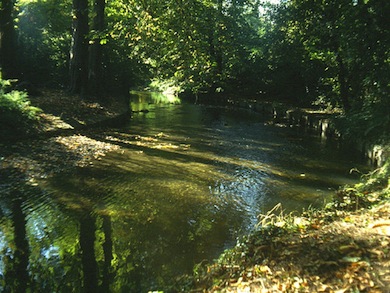For a length of over 5 km, the River Crane is bordered by habitats of remarkable diversity, including woodland, dry pastures, water meadows and areas of open water. Willow-alder woodland occurs in several places, which is a rare habitat in London. The river itself is one of the most natural in London, and is a stronghold for uncommon wetland plants.There are three Local Nature Reserves within the site; Crane Park Island (managed by the London Wildlife Trust), Cranebank Water Meadows and Pevensey Road Open Space. Volunteer management workdays at Crane Park Island are on the last Sunday of the month (call 020 7261 0447 for further details).Richmond Active Living Scheme uses this site – a Walking the Way to Health (WHI) scheme; see link for details.
Local Wildlife Site
Accessible Sites of Importance for Nature Conservation
Crane Corridor
Borough: Hillingdon, Hounslow, Richmond upon Thames
Grade: Metropolitan
Access: Free public access (part of site)
Area: 179.81 ha
Description
Wildlife
The river is home to wide variety of water plants, such as arrowhead, unbranched bur-reed, river water-crowfoot and at least four species of pondweeds, including the London rarity small pondweed. Various damp pastures, old water meadows and associated ox-bow ponds associated with the river's floodplain also support a rich collection of uncommon plants, including water-purslane, nodding bur-marigold, ivy-leaved crowfoot, meadow crane's-bill, marsh-marigold and bog stitchwort.The breeding bird community includes kingfisher, grey wagtail and reed warbler. The specially-protected water vole is also present and a much-celebrated resident at Crane Park Island LNR.Facilities
Information; horse riding; playground; waymarked walking route (the London LOOP passes through the reserves and along the river). The London Wildlife Trust hosts events at Crane Park Island. Old Shot Tower visitor centre open every Sunday afternoon.
View of the River Crane © Ian Yarham
Feedback
Have a question or a comment for this site, or notice anything missing or out of date? Please contact us.
